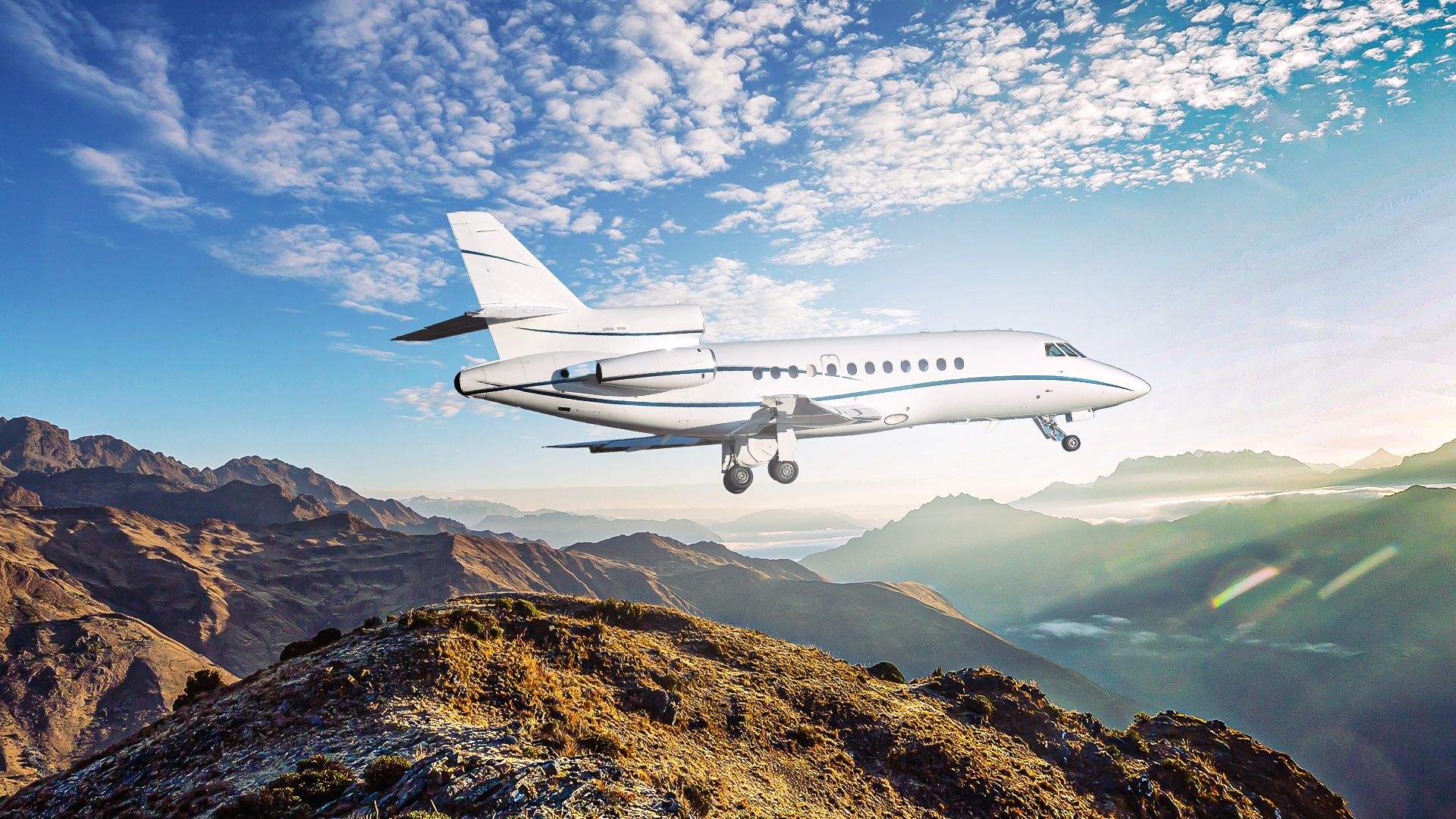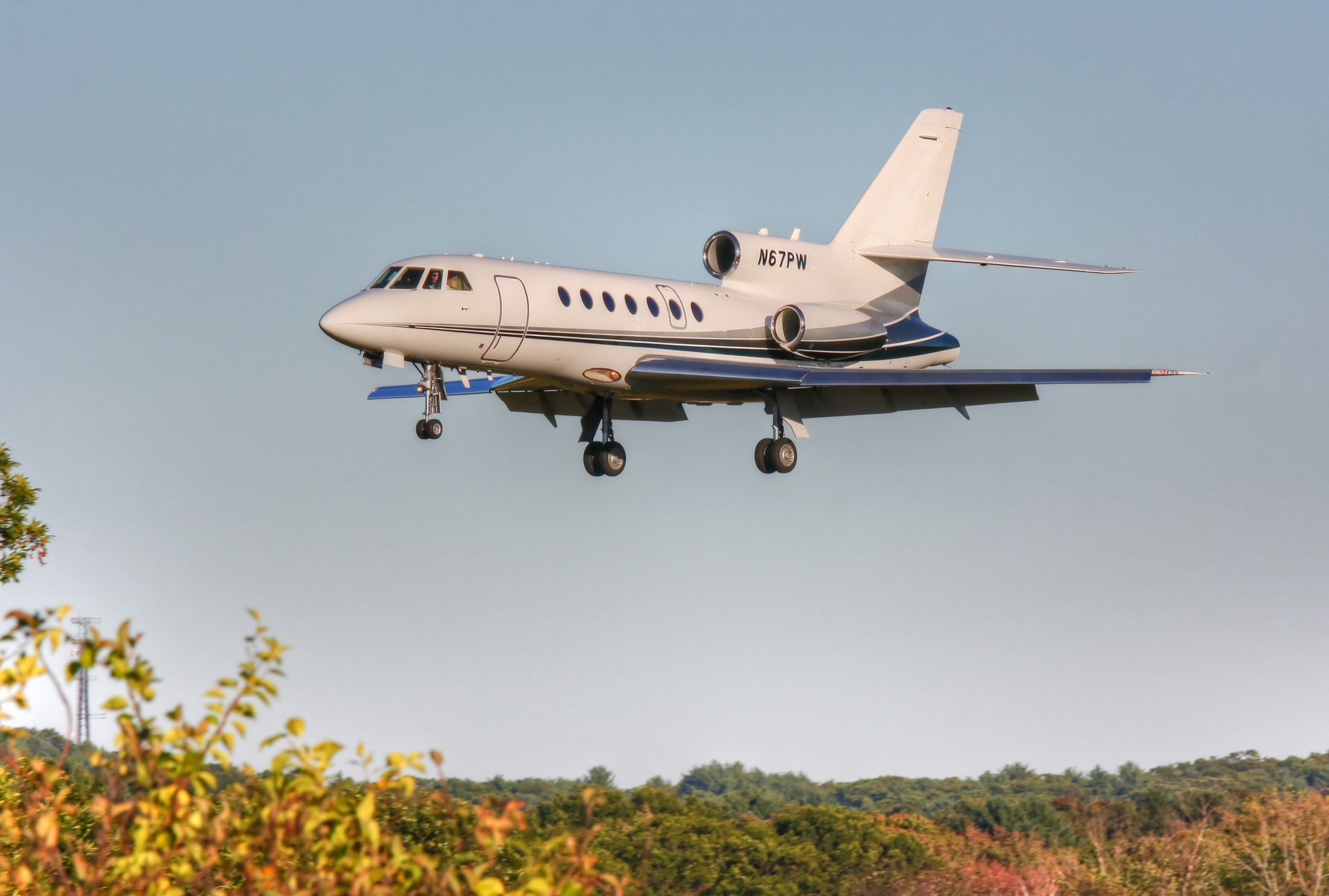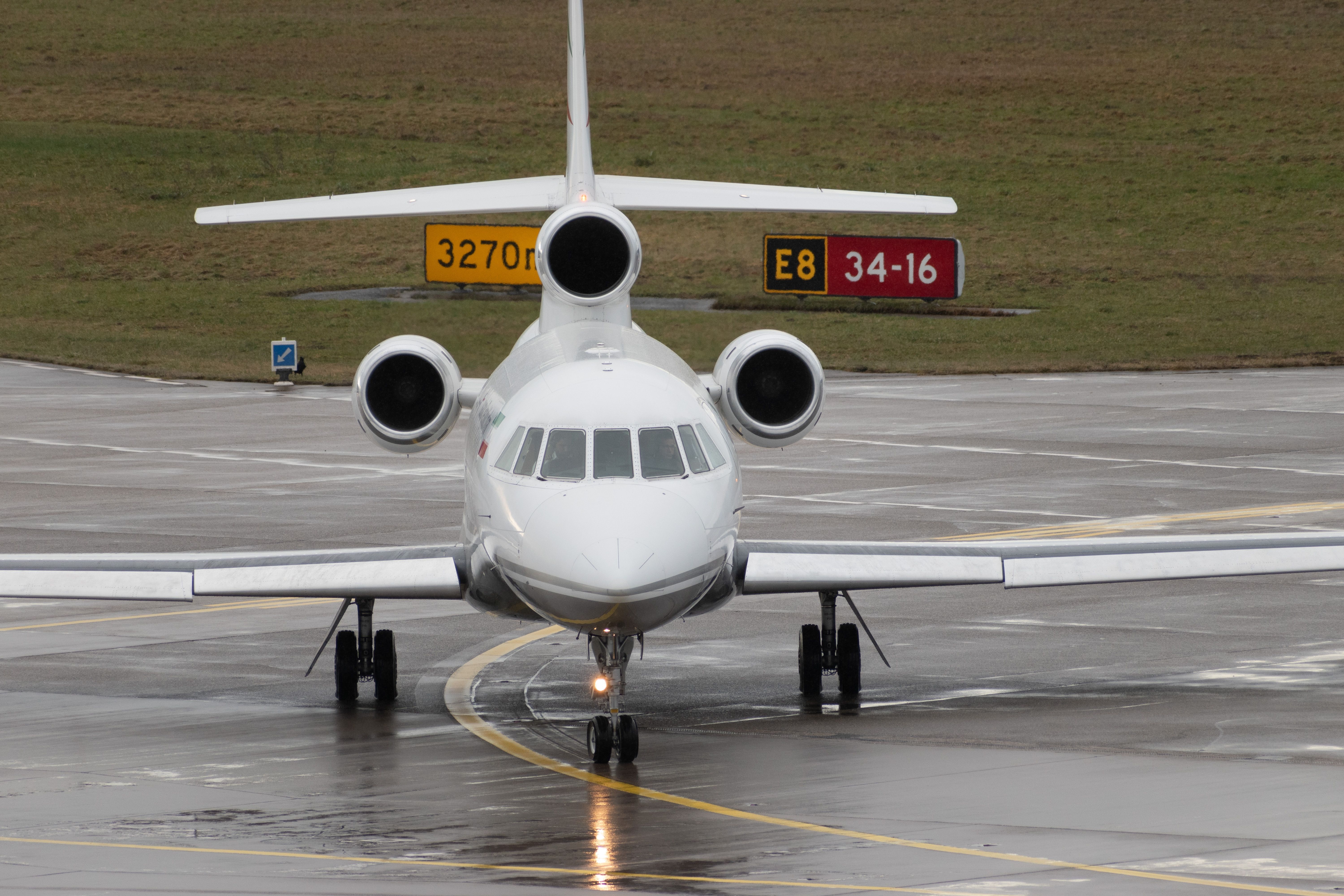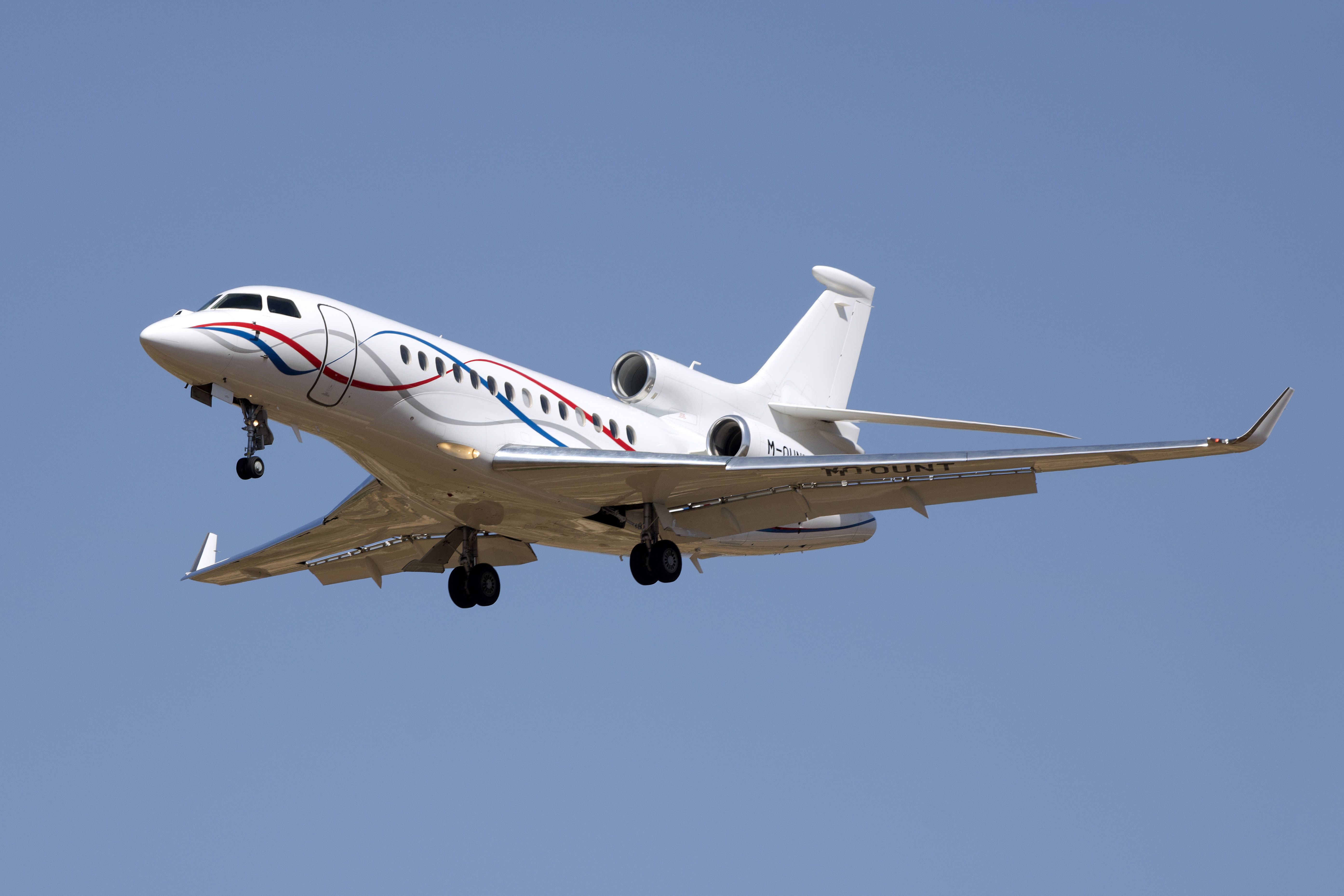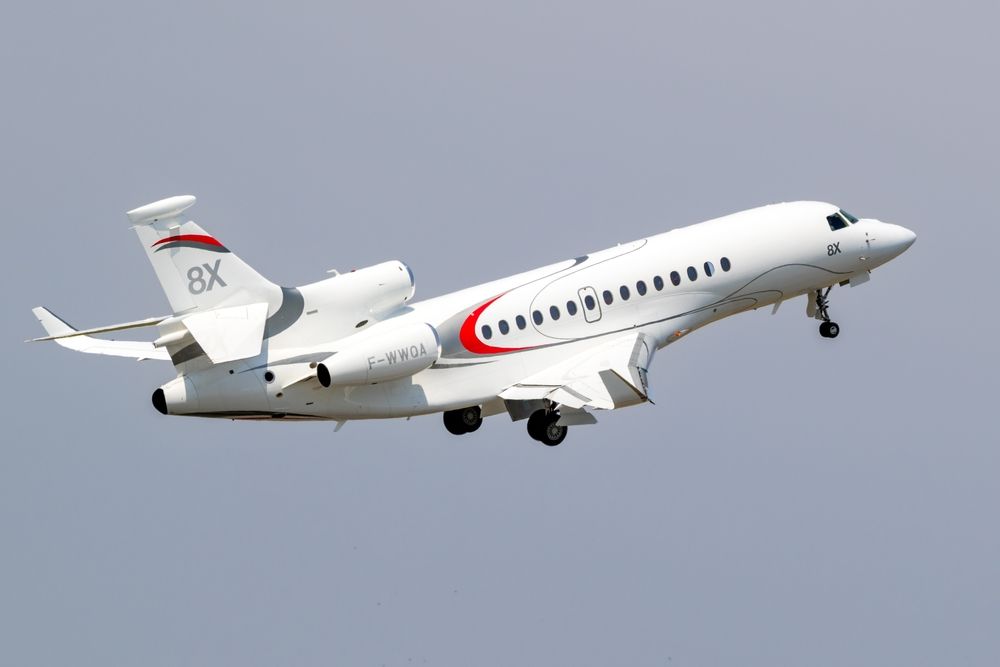Summary
- Dassault Aviation, a leading private jet manufacturer, is known for producing military aircraft like the Rafale.
- The Falcon series includes famous private jets with three engines, such as the Falcon 50, 900, 7X, and 8X.
- Dassault jets with three engines offer superior performance and range, making them popular choices in private aviation.
Dassault Aviation is one of the biggest private jet manufacturers in Europe. The company was founded in 1929, nearly 100 years ago. The Paris, France-based company is known for its production of military aircraft, which includes the Dassault Mystere, Etendard, Mirage, and, most recently, the Rafale, among others.
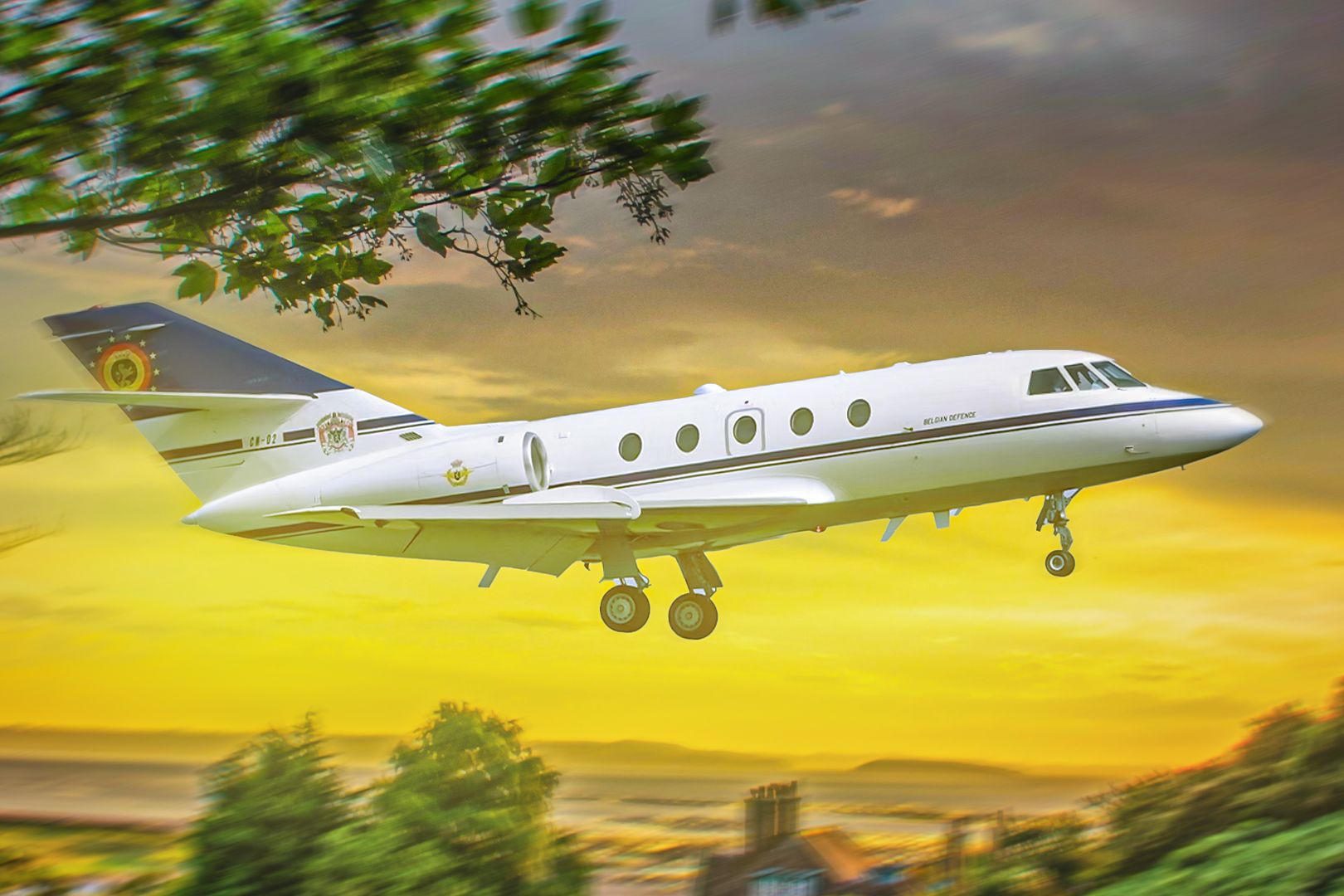
Related
What Is The Most Produced Dassault Falcon Variant?
The most produced Dassault Falcon ever was the Falcon 20.
However, Dassault has also become dominant in the private aviation industry. The original equipment manufacturer (OEM) has built an array of business jets designated under the name Falcon.
Some of the most famous private jets it has produced are aircraft that have three engines, which is a unique configuration in the private aviation industry. Dassault even plans to introduce another trijet aircraft in the near future, which is designated the Falcon 10X.
Let’s take a closer look at the currently-produced Dassault jets that were built with three engines.
Dassault Falcon 50
The first mass-produced business jet with three engines was the Dassault Falcon 50. Dassault originally designed the aircraft from a previous variant, the Dassault Falcon 20. However, Dassault implemented several new features, with the main feature being the third engine.
The aircraft was first designed in the early 1970s. The first prototype conducted its maiden flight in November 1976, and it was certified by the Federal Aviation Administration (FAA) in March 1979, with deliveries beginning shortly after.
Another upgraded variant, which was designated the Falcon 50EX, was introduced in 1996. Overall, the Falcon 50 series was produced from 1976 through 2008, and over 350 aircraft were manufactured.
Photo: QualityHD | Shutterstock
As previously mentioned, the Falcon 50 added a third engine, as well as a new wing, to a fuselage similar to the Falcon 20. The new wing was supercritical and was designed with the help of computer-aided design. All three Falcon 50 engines were Garrett TFE731 turbofan engines, which provided the aircraft with nearly 4,000 pounds of thrust each.
The most recent variant, the Falcon 50EX, has the following specifications:
|
Length |
60 feet nine inches |
|---|---|
|
Height |
22 feet eleven inches |
|
Wingspan |
61 feet eleven inches |
|
Maximum takeoff weight (MTOW) |
39,700 pounds |
|
Maximum speed |
548 knots (631 miles per hour) |
|
Cruise speed |
488 knots (561 miles per hour) |
|
Range |
3,075 nautical miles (3,540 miles) |
Dassault Falcon 900 series
Shortly after the introduction of the Falcon 50 series, Dassault began work on another trijet aircraft. This aircraft, later designated the Falcon 900, was first conceptualized in the early 1980s.
The aircraft flew for the first time in September 1984, nearly 40 years ago. Both the FAA and the French aviation authorities certified the aircraft in 1986, and deliveries began shortly after. This aircraft, like the Falcon 50, was adopted by several militaries for use by government officials.
Photo: Robert Buchel | Shutterstock
The Falcon 900 was slightly bigger than the Falcon 50. The airframe was also manufactured with composite materials, which are typically lighter than the aluminum alloys that were used in the Falcon 50.
The aircraft also incorporated a glass cockpit, with newer aircraft featuring the Universal Avionics system. The Falcon 900 is powered by three AlliedSignal TFE731 turbofan engines, which provide nearly 5,000 pounds of thrust.
This aircraft has the following specifications:
|
Length |
66 feet four inches |
|---|---|
|
Height |
25 feet two inches |
|
Wingspan |
70 feet two inches |
|
Maximum takeoff weight (MTOW) |
45,500 pounds |
|
Maximum speed |
Mach 0.87 (645 miles per hour) |
|
Cruise speed |
510 knots (590 miles per hour) |
|
Range |
4,000 nautical miles (4,600 miles) |
Dassault Falcon 7X
Dassault introduced an upgraded variant of the Falcon 900 in 2007, the Falcon 7X. The aircraft began development in the early 2000s as a new aircraft that improved nearly all performance specifications of the Falcon 900.
The first Falcon 7X flew in May 2005 and was certified in April 2007. The first aircraft was delivered in June 2007, and over 300 Falcon 7Xs have been delivered.
The Falcon 7X uses the same fuselage as the Falcon 900, but it features a highly swept wing with a supercritical airfoil. Early Falcon 7Xs utilized three Honeywell FX5 engines, which provided over 18,000 pounds of thrust.
Newer aircraft use the Pratt & Whitney Canada PW306 engines. It also features the EASy avionics system, which is based on the Honeywell Primus avionics suite.
The Falcon 7X has the following performance specifications:
|
Length |
76.08 feet |
|---|---|
|
Height |
25.67 feet |
|
Wingspan |
86 feet |
|
Maximum takeoff weight (MTOW) |
70,000 pounds |
|
Maximum speed |
Mach 0.9 (594 miles per hour) |
|
Cruise speed |
Mach 0.8 (528 miles per hour) |
|
Range |
5,950 miles (6,847 miles) |
Dassault Falcon 8X
Dassault manufactures the largest trijet aircraft, the Falcon 8X. In May 2014, at the annual European Business Aviation Convention & Exhibition (EBACE), Dassault first revealed the upgraded aircraft.
The first prototype aircraft conducted its maiden flight in February 2015. The Falcon 8X received type certification from the European Aviation Safety Agency (EASA) in June 2016, and the first aircraft was delivered in October of that year.
Photo: VanderWolf Images | Shutterstock
The Falcon 8X has a fuselage similar to that of the Falcon 7X, but it features a 3.5-foot longer cabin. Dassault also improved the wing design to make it more aerodynamically efficient.
The French manufacturer also improved the engine, installing a Pratt & Whitney Canada PW300, which features nearly 7,000 pounds of thrust each.
|
Length |
80.02 feet |
|---|---|
|
Height |
26.1 feet |
|
Wingspan |
86.25 feet |
|
Maximum takeoff weight (MTOW) |
73,000 pounds |
|
Maximum speed |
Mach 0.9 (594 miles per hour) |
|
Cruise speed |
Mach 0.8 (528 miles per hour) |
|
Range |
6,450 miles (7,423 miles) |

